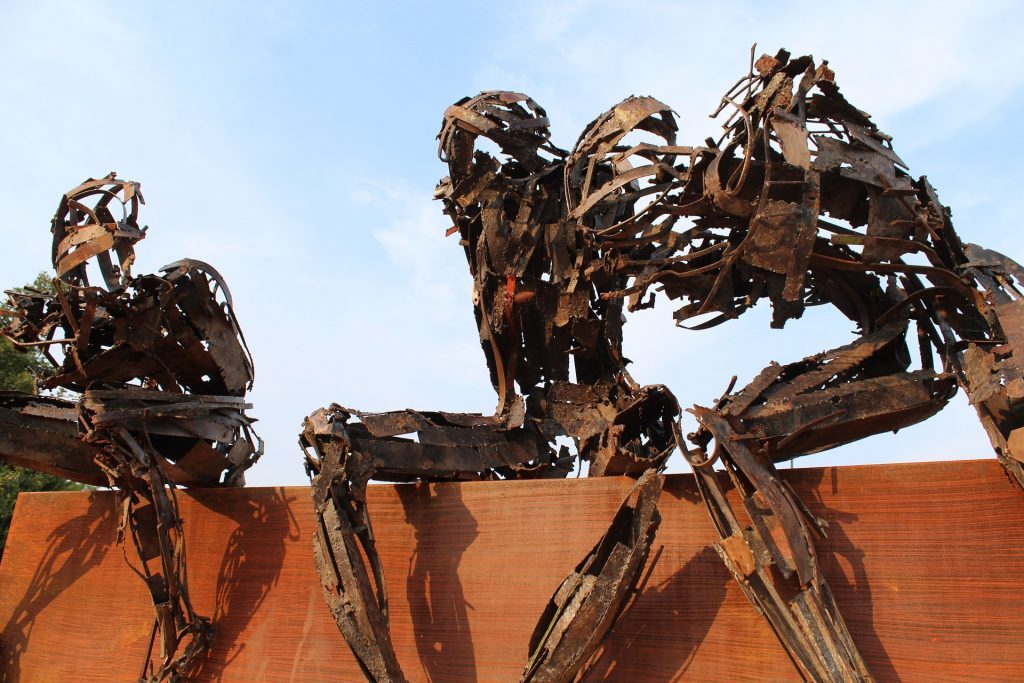So what constitutes art?
I’ve been asked about this a lot in the last few months. I was asked to help curate a digital arts festival, called Creativate, which took place last year for the first time as part of the National Arts Festival in Makhanda.
The town (formerly Grahamstown) has been the home to this wonderful arts festival for 45 years and Creativate (which is co-curated by festival CEO Tony Lankester and Lauren Fletcher) is entering its second year.
One Saturday night last July, on the dance floor of the cheesy Prime night club in New Road, I especially thought about what constitutes art. I was listening to an unlikely collaboration between a DJ, drummer and guitarist. They are all world-class musicians and masters in their respective field.
To anyone with an appreciation of electronic music, this would have been a rare treat. DJ Glenn van Loggenberg, Barry van Zyl (who is Johnny Clegg’s long-time drummer) and bassist Josh Hawkes (who has worked with Freshlyground, Streaks, and Zap Dragons) gave a masterclass. This was not only in their individual instruments but as a trio performing in a night club. It was a superb combination, and they will be back again this year.
But is it art?
If they were a jazz trumpeter or trombone player, jamming with a piano player, would we be asking this question?
Digital art is a nascent field. It is just beginning to gain recognition as a bone fide art form. When artists begin experimenting with new art forms, there is often derision. Picasso was called mad when he began his experimental proto-Cubism in the early 1900s. His breakthrough work Les Demoiselles d’Avignon (The Young Ladies of Avignon) in 1907 was hugely controversial because two of the five female nudes had African masks for faces. Art historians argue that this controversial period in his work was what set him apart from his contemporaries.
The two most obvious areas of development, which happened to be two of the big trends in mobile and tech, are virtual reality (VR) and augmented reality (AR). With any smartphone, AR is easily done because the phone allows for that overlay onto reality. Instead of being limited to a canvas, artists can “paint” or “draw” substantially larger works, sometimes linked to buildings (where the art can appear as massive murals) or are art adventures within the cityscape.
This year’s there’s an “invisible exhibition” featuring augmented reality art works, that you can see via a tablet or smartphone. Evergreen artist William Kentridge and nine others are using this new medium of AR in novel new ways.
Last year one of the most popular art works was a virtual reality dinner, called Doghouse, requiring five people to sit around a table with VR headsets on and participate in a family dinner.
But other artists are using traditional equipment in novel ways. Film-loving architect Hugh Fraser is doing a talk on his fascinating use of still images to create striking videos of some of the 400 cities he’s visited.
I’m especially excited about American multidisciplinary artist Gary Baseman and Brazilian-born Julius Wiedemann, the executive editor for design and pop culture at publishers Taschen, who is an eclectic expert on design-based visual culture.
And then there is Ralph Borland and his African Robots, a delightful combination of no-tech wire art (that most South Africans see hawkers selling at traffic lights every day) and high-tech electronics, creating “interactive and kinetic forms of work”. Robots made at robots, as it were.
This article first appeared in Financial Mail
